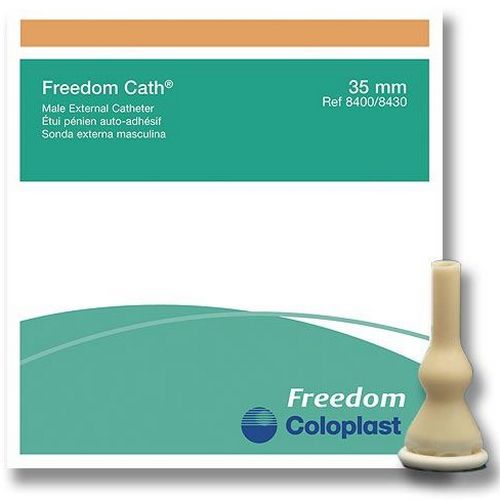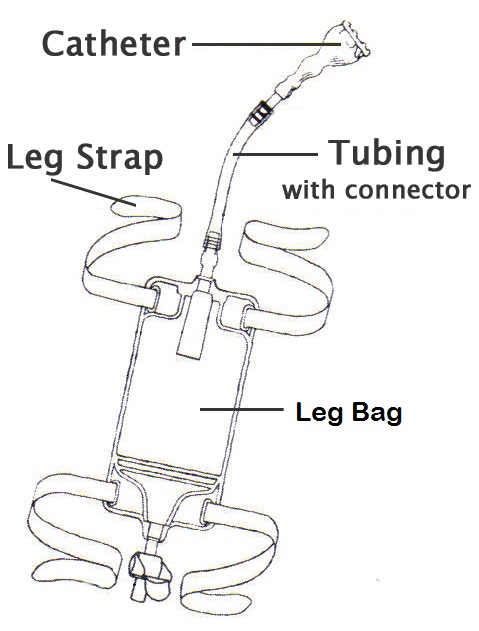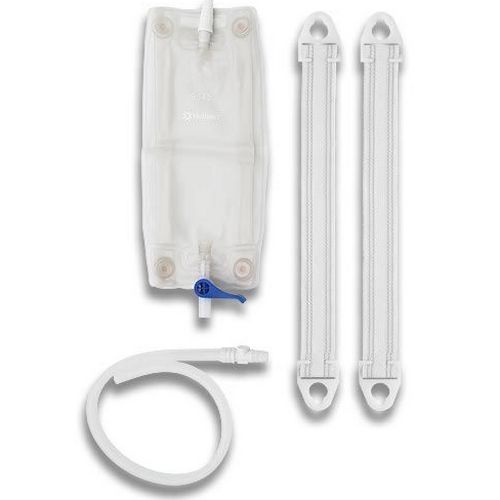How to Use Condom Catheters - A Comprehensive Guide to Using External Catheters for Men
Condom catheters provide a non-invasive, comfortable option for male urinary incontinence management. They are easy to use, reduce infection risks, and enhance quality of life. Proper application is crucial to avoid complications and ensure comfort. This guide emphasizes their correct use for optimal health and comfort.
What is a Condom Catheter?
Condom catheters are a type of urinary catheter that is worn on the penis for the treatment of incontinence. Men who experience urinary incontinence can use external urinary catheters without having to wear adult incontinence briefs.
External condom catheters are worn and when they are connected to a leg bag via extension tubing they funnel and collect urine away from the body. Most commonly external condom catheters are made of either silicone or latex and they are self-adhering, which means there is adhesive on the inside of the catheter that allows it to stay on the outside of the penis.
Male external catheters are not a one-size-fits-all item. You will need to take measurements. In order to use condom catheters, you will need to gather some medical supplies, such as tubing and a leg bag. Just like using any medical device, using external male condom catheters has a learning curve.
Be patient with yourself and don't be afraid to contact your medical team or an online medical supply company for information on how to best use condom catheters.
What are the advantages of using an external catheter?
Exploring the benefits of external catheters reveals why they are a preferred choice for many men dealing with urinary incontinence. These advantages include:
-
Non-Invasive: Does not require insertion into the body, often more comfortable than indwelling catheters.
-
Reduced Risk of UTIs: Lower chance of urinary tract infections compared to users of indwelling catheters.
-
Discreet Alternative to Incontinence Products: Less bulky and more discreet compared to incontinence pads or diapers, keeping the skin dry.
-
Ease of Use: User-friendly for self-application and removal, with various styles and fits available.
These benefits highlight the practicality and comfort of external catheters. By choosing the right style and fit, individuals can enjoy an improved quality of life with minimal discomfort and reduced health risks.
How to Measure for Condom Catheters:

Condom catheters are not one size fits all. In order to work properly, they need to fit. If they are loose, they will fall off, and if they are too tight, they will be uncomfortable and restrict blood flow and the flow of urine through the urethra.
Manufacturers make sizing guides that are available from your local doctor, online medical supply company, or online resource. Using a sizing guide is the best option! If you don't want to get a sizing guide, all you need to do is to take a string and wrap it around the shaft of your penis making sure the string is neither too tight or too loose, and then measure the string using millimeters.
Measure all the way around the shaft of the penis and then divide that number by 3.14 (pi), this is how you get the diameter. They are sized in millimeters and are based on the diameter of your penis, not the circumference.
The diameter measurement number in millimeters will tell you the correct size you need to purchase.
For your first purchase, we recommend buying 5 of the size closest to your measurement, 5 in the size below that and 5 in the size above it. This will allow you to try on different sizes and you can choose the one that works best for you.
What You Will Need to Use Condom Catheters
Preparation for Application:
-
Wash hands with soap
-
Trim hairs on the shaft and the base of your penis
-
Wash penis thoroughly with mild residue-free soap and warm water
-
Rinse off all soap and trimmed hair
-
Dry the skin thoroughly, it can help to use a hair dryer on a low setting to make sure the skin is completely dry.
Supplies You Will Need::
-
External Condom Catheter
-
Urinary Leg Bag or similar urine collection device
-
Extension Tube (used to connect the condom catheter to the urinary leg bag)
-
Non-pointed manicure scissors (for trimming pubic hair)
-
Soap (must not leave a cream or residue on the skin)
-
Washcloth
-
Towel
How to Put on a Condom Catheter
Applying a self-adhesive condom catheter correctly is crucial for both comfort and functionality. Here's a step-by-step guide to ensure proper placement and use:
-
Open the Package: Carefully open the package without unrolling the condom catheter.
-
Position the Catheter: Place the rolled self-adhering catheter over the tip of the penis.
-
Unroll the Catheter: Carefully and slowly start to unroll the condom catheter down the shaft to the base of the penis.
-
Leave Space at the Tip: Ensure there is enough space in the funnel end of the condom so the tip of your penis doesn't rub against the inside, preventing chafing.
-
Smooth Out the Sheath: Try to smooth out the condom catheter sheath as you unroll it.
-
Consider Foreskin: If you are uncircumcised, leave the foreskin in place over the head of the penis.
-
Secure the Adhesive: Gently grip the catheter and squeeze gently to ensure the adhesive inside the condom catheter adheres properly. Skipping this step can lead to accidental condom failure.
-
Check for Wrinkles: Be aware that excessive wrinkles in the condom catheter may indicate a wrong size. If so, try a smaller size for a better fit.
Be aware, if there are excessive wrinkles in the condom catheter it can be an indication that you do not have the correct size, try a smaller size and see if that works better.
How to Connect a Condom Catheter to a Urinary Leg Bag:
The urinary collection bag, adaptable for thigh or calf placement, is connected to the condom catheter via extension tubing. This tubing, crucial for the smooth flow of urine, can be adjusted in length to suit your comfort and prevent kinks that might hinder urine flow or cause leakage. By using different lengths of drainage tubing you can wear your urinary leg bag however is most comfortable.
Most extension tubing comes with an adapter, but if not included, tubing connectors are available for separate purchase. Custom fitting your tubing is key; ensure it's the right length to maintain comfort and functionality when sitting, standing, or moving. Avoid cutting the tubing too short, as this can cause tension, potentially leading to leakage or dislodging the catheter.
How to Remove a Condom Catheter
Removing a condom catheter correctly is as important as its application, both for comfort and to maintain skin integrity. Here's a step-by-step guide to safely remove a condom catheter:
-
Wash Hands: Start by thoroughly washing your hands with soap and water.
-
Loosen Adhesive: Wrap a warm washcloth around the penis for a minute to loosen the adhesive.
-
Gentle Removal: Gently roll the old condom down the shaft of the penis. Avoid pulling on the end of the condom catheter to prevent irritation. If the catheter is difficult to remove, use an adhesive remover wipe around the edge of the catheter sheath as you roll it away from the skin.
-
Clean Residue: Remove any adhesive residue with an adhesive remover. Ensure the skin is clean and dry before applying a new condom.
It's important to follow these steps carefully and consult healthcare providers for medical advice if you encounter any issues during removal. Regular communication with your healthcare provider ensures safe and effective use of condom catheters.
What are Urinary Leg Bag Straps and Holders?
The leg bag is held on by straps. There are many leg bag straps and holders to choose from, and if you choose not to use straps, there are leg bag holders as well. Make sure your leg bag straps are not digging into your skin or leaving raised welts when you remove your bag. This can cause skin irritation and pressure sores if you are prone to pressure injuries. You want the bag to be secure and the straps to fit comfortably. To help the urinary leg bag be more comfortable, always empty your leg bag when it is half full. This will keep the bag from being too heavy and create less pull on your skin. When you empty your drainage bag, check your condom catheter, connections, leg bag, and straps to make sure everything is in working order. These checks throughout the day can help prevent leaks.



